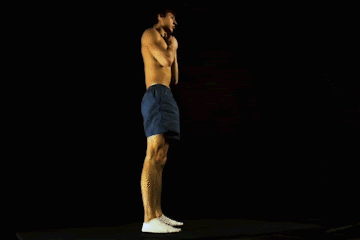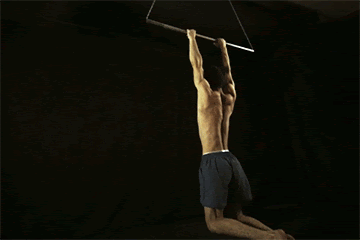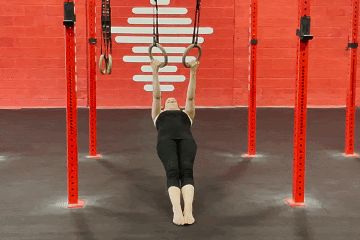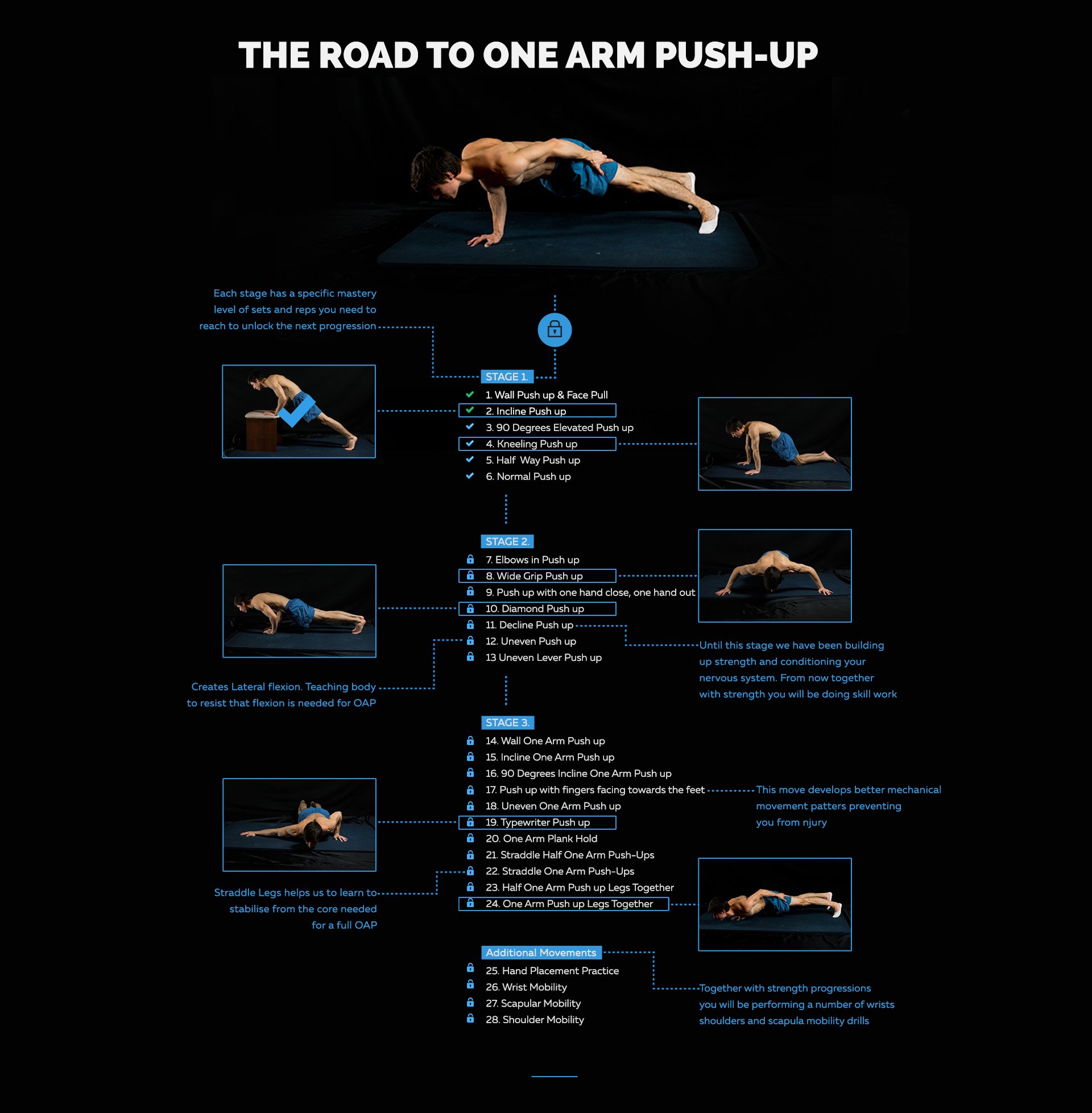There’s a lot of debate surrounding whether or not bodyweight exercises can build muscle. Some people swear by them, while others claim that they can’t produce the same results as weightlifting. So, what’s the truth? Can bodyweight exercises build muscle?🔍
The short answer is a big, muscular, resounding YES! Bodyweight training can 100% build muscle from beginners to advanced. This is only true if you make your bodyweight training geared towards muscle-building such as making it progressive, eating enough with high protein, and sleeping well. It’s simple really!
In this article, we’ll take a look at the science behind bodyweight exercises and explore whether or not they can help you achieve your fitness goals!
What are bodyweight exercises?😱
Bodyweight exercises, also known as calisthenics, have existed for centuries and were used as a form of physical conditioning in many cultures. These exercises are a form of resistance training; meaning you’re using your body weight as resistance to primarily build muscle and strength. Unlike weightlifting where you use external weights such as dumbbells, barbells, and kettlebells to build strength.
😱Benefits of bodyweight exercises
✅Convenience
A convenient training regimen is one of the major benefits of bodyweight exercises. You can do them anywhere, at any time, with no equipment required. This makes them perfect for busy people who can’t always get to the gym or don’t have access to weights.
If you want to maximize your gains from bodyweight training, we highly recommend getting a set of equipment. Don’t worry, it’s very accessible and affordable. You would ideally want to get:
- A pair of gymnastics rings
- Pull-up bar
- Dip station
- Resistance bands
Read here to learn more: 📍7 MUST-HAVE Calisthenics Equipment
But you can also train without any equipment at all! Here’s a sample workout: 📍Full-body Calisthenics Workout Without Equipment
✅Adjustable difficulty
Bodyweight training has unfortunately gained a reputation among gym-goers as an exercise for beginners. This is absolutely a myth. Calisthenics is progressive and through📍progressive calisthenics, you can easily adjust the intensity of any exercise to cater complete beginners to absolutely advanced athletes.
There are many factors you can change to make an exercise suit your skill level and goals. You can adjust the number of repetitions, sets, tempo, and body angles, using only one arm, range of motion, and more.
Read more on how to make bodyweight exercises adjustable here: 📍Progressive Calisthenics
This is a key factor in building muscle with calisthenics. We’ll dive into this topic a little bit deeper later in the article.
✅Holistic development
With bodyweight exercises, you’re not only building strength and muscle. You’re also developing other aspects of fitness such as coordination, balance, and flexibility. This is due to the fact that many bodyweight exercises are compound exercises.
Compound exercises are exercises that work for multiple muscle groups simultaneously. A great example of a compound exercise is push-ups. The push-up not only works your chest and triceps, but it also works your core and legs (stabilizing muscles).
This is in contrast to isolation exercises which only work for one muscle group at a time. A good example of an isolation exercise would be bicep curls. This exercise only works your biceps.
Isolation exercises have their place in a workout routine. But, if you’re looking for a more holistic approach to fitness, then bodyweight exercises are the way to go!
✅Functional movement for daily life
Calisthenics is natural movement. As mentioned above, bodyweight exercises are compound exercises. This means that we use our whole body when doing the movements. In real life, it’s the same. We use our whole bodies to pick up a box, climb the stairs, or play with our kids.
Isolation exercises don’t carry over as well to real-life situations. Have you ever tried to pick something up using only your biceps? It’s not very effective. However, if you can do a one-arm chin-up, then you can easily pick up a box with one arm by engaging your core, shoulders, biceps, and the whole body!
Read more: 📍What it Means to be Strong in the Real World
💪Muscle-building Mechanisms
Before establishing calisthenics as an excellent way to build muscle, let’s first talk about the factors that will help you build muscle using calisthenics.
The following are three primary ways that muscle growth occurs, as described by Brad Schoenfeld, an exercise physiologist, in his 2010 publication. Muscle tension, metabolic stress, and tissue damage are the three mechanisms.
👊Mechanical Tension
The tension that is produced by force generation and stretch are considered essential to muscle growth, and the combination of these two stimuli has been shown to have a significant additive impact. Specifically, mechanical overload increases muscle mass while unloading causes tissue loss.
To simplify, mechanical tension refers to the intensity or difficulty of your exercise. It’s how heavy you’re lifting. How challenging your workout is.
While bodyweight exercises aren’t straight forward as their weightlifting counterparts, you’re still fighting gravity to push or pull your body weight. And through manipulating your body position, you can increase and decrease the intensity of an exercise; hence also adjusting the mechanical tension needed for muscle growth.
As Schoenfeld said in his 2019 meta-analysis, mechanical tension is the primary driving force for hypertrophy in our current studies.
👊Metabolic Stress
Commonly known as the burning sensation AKA the “pump” after lifting, metabolic stress doesn’t seem to be crucial for building muscle. However, studies still show that it assists in this goal when reached muscle fatigue.
We can make use of this mechanism to maximize muscle growth. In calisthenics, we can induce metabolic stress in our training by opting for lower intensity exercises for higher rep ranges. There are also some “isolation” exercises that can in stimulating this mechanism.
Take note we put in some quotes since calisthenics movements aren’t really isolation, but more of shifting the emphasis to certain muscle groups.
👊Muscle Damage
Remember your first feeling after a workout? That soreness the next day that goes away only after a few days? This is the manifestation of muscle damage.
While it can be a hindrance to your workout performance, studies have shown that this can lead to an increase in muscle growth. However, this mechanism isn’t crucial for muscle growth. In fact, it can hinder you from training harder which can negatively impact your potential for muscle growth.
Read more here: 📍How to Prevent Muscle Soreness After Workout
So for now, let’s stick to metabolic stress and more on mechanical tension for building muscle.
Can Bodyweight Exercise Build Muscle?🤯
YES!👍 You can definitely build muscle by just using your body weight.
Many people think it’s hard, but usually, people aren’t just satisfying the requirements to build muscle. So even if you’re training with weights, if you’re not meeting the crucial factors of building muscle, then you’re probably not going to progress any time soon.
Need a full guide? Check this out: 📍How to Build Muscle Mass with Bodyweight Only
🤔Why people aren’t gaining muscle with bodyweight training?
👎Not getting enough training
There are too many 📍calisthenics myths so people usually follow incorrect or inefficient training protocols for building muscle.
If your body isn’t getting enough stimuli from your training, then your body won’t adapt to build muscle. You need to get enough stimulation by training hard and meeting at least the two mechanisms for hypertrophy.
The problem is that there’s a lot of misinformation about calisthenics and many people fail to address the methods of actually building muscle with body weight alone.
You can read more here about training protocols for building muscle: 📍5 Simple Tips to Build Muscle at Home
👎Not eating well enough
Nutrition plays a massive role in building muscle. The food you eat fuels your workouts and helps your body recover and grow. If you’re not eating well enough to fuel your body, your body will not be able to repair itself to grow.
👎Not sleeping well enough
Do you know that you actually grow stronger during your rest instead of during your training? Sleep is when your body can finally rest and heal from all the training you’ve put it through.
If you’re not sleeping enough, you’re not giving your body the time it needs to fully recover and grow. A 2011 study even found that lack of sleep, not only slows down muscle growth but also instigates muscle loss!
🤫Secrets to Building Muscle with Bodyweight Exercises
Well, there aren’t any secrets really. These are very general, known, yet highly effective ways to build muscle mass with bodyweight training.
It’s really simple. However, people just don’t realize that muscle hypertrophy is a slow process. And when gaining muscle, you will inevitably also gain fat tissues unless you’re performing a 📍body recomposition which isn’t easy to do. Also, failure to adhere to proper training protocols and diet for a long period of time is usually the biggest culprit of not succeeding in the muscle-building journey.
Here are the ways for you to maximize muscle growth.👇
🔥Progressive Overload Training
We’ll first talk about the training aspect. Remember the three mechanisms for muscle growth? It all falls down in your training.
Let’s keep it simple. Train harder every session. You don’t need to push your 100% all the time, but the key is every training session is getting more challenging than the last one even if it’s just by adding 1 rep. No need to be gassed up every session. Training to 📍failure with calisthenics has its place and also has its consequences.
This is the principle of progressive overload. Many tend to focus solely on adding repetitions when working with bodyweight exercises, but this isn’t the only way to up your game.
Read here to learn more on how to make calisthenics exercises more challenging: 📍Progressive Calisthenics
🔥Nutrition
Caloric Surplus (eat more!)
If you’re not eating enough calories or the right types of foods, then you’re going to have a hard time gaining muscle.
The law of thermodynamics still applies here. You need to be in a caloric surplus, meaning you’re consuming more calories than you’re burning. This is the only way you can have extra energy to fuel your workouts and grow muscle tissue.
The takeaway from this: eat more than what your body needs to maintain weight.
Check out this free calorie counter for a general guide. The calorie count you will get isn’t exact and should be taken generally as a range.
We still recommend consulting with a registered nutritionist to get a piece of better advice on your diet since nutrition highly varies from person to person.
High protein
Protein is the most important macronutrient for muscle growth. It’s essential to eat enough protein to give your body the building blocks it needs to grow muscle tissue.
The current guidelines recommend 1.6 grams per kilogram of body weight per day with a limit of 2.2 grams per kilogram of body weight to maximize muscle-building potential.
You can get your protein from a variety of sources such as meat, eggs, dairy, beans, and legumes.
Contrary to popular belief, fats and carbs are not enemies. In fact, they’re essential for muscle growth. Fats help with hormone production, joint health, and recovery while carbs help in giving your body energy to train hard while assisting in functions for hypertrophy.
Source your carbs, fats, and protein from whole foods. Processed foods AKA junk food can still be in your diet from time to time. No need to cut them out totally.
The takeaway from this: eat at a caloric surplus with high protein and well-balanced fats and carbs depending on your individual requirement.
More help here: Bodybuilding Nutritional Guide: 📍What You Need to Eat to Build Muscle & Lose Fat
Recovery
Recovery is just as important as training. If you’re not giving your body time to recover, then you’re not going to make ny progress.
You need to get enough sleep and rest. Most people need around eight hours of sleep per night. And we don’t mean just lying in bed for eight hours. We mean getting high-quality sleep for around eight hours. This is the general guideline but the best number of hours varies from person to person according to scientific literature.
You should also be taking days off from training. We recommend one to three days per week depending on your training frequency and intensity.
The takeaway from this: get enough sleep and rest to allow your body to recover from your workouts. This is when you’ll actually grow stronger.
Read more: 📍The Ultimate Guide to Recovery
💪Muscle-building Workout
There are actually many ways and routines you can play with to build muscles. But the command denominator is that your workout should be progressive that suit your current skill level.
👇Here are examples of muscle-building workouts:
📍Bodybuilding Calisthenics Routines
Take note that these workouts are what you called the 📍cookie-cutter workouts. We’re giving you an example, but it’s not necessarily the best for you.
The best muscle-building routine is the one that’s personalized and adaptive to your skill level, lifestyle, and goals.
If you’re interested in building muscle with a proper program, check out the app🤳 from The Movement Athlete. Their powerful AI generates an amazing, challenging program based on you while keeping it sustainable for the long run.
Want to try it out?
Get the 7-day Free Trial Training Program!
📌Takeaway
You can definitely build muscle with bodyweight exercises. However, there are a few things you need to do in order for it to happen.
First, you need to make sure you’re progressively overloading your muscles by making your workouts harder over time.
Second, you need to be eating enough calories and protein to give your body the energy it needs to grow.
And finally, you need to make sure you’re recovering well by getting enough sleep and rest.
Follow these tips and you’ll be on your way to building the body of your dreams! We hope this article has helped clear some things up for you. As always, feel free to reach out to us if you have any questions.
‘Til next time!
If you want to learn more about how to build muscle with bodyweight exercises, check out this article:




